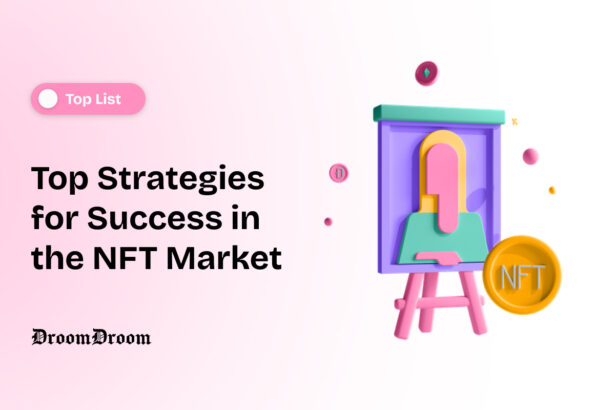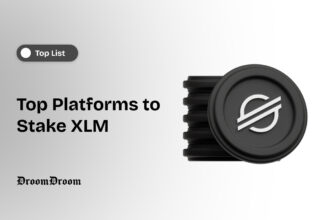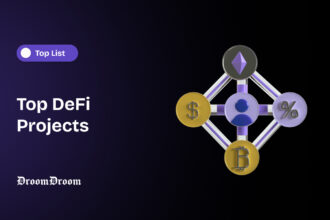Top strategies for success in the NFT market, emphasizes the importance of reliable insights to safeguarding and evaluating onchain assets.
- Top 5 Strategies for Success in the NFT Market
- Research the Market
- Invest What You Can Afford to Lose
- Consider Rarity
- Think in the Long Term
- Diversify Your Portfolio
- A Breakdown of NFT Security Issues
- Identifying Wash Trading using bitsCrunch
- Dealing with Copyright Infringement
- Identifying NFT Cybersquatting
- Analytics as one of the Top Strategies for Safety and Profitability in NFT Investment
- Enriched NFT Analytics
- Feeding Enriched Analytics to NFT Lending Protocols
- Comprehensive NFT and DeFi Market Analytics
- Proactive Fraud Detection and Alerting System
- Compliance with Regulations
- Creators
- Case Study: Brands Leveraging the Power of Data Analytics to Safeguard NFTs
- Analytics Saas Solutions for Processing NFT Data into Reliable Market Research Insights
- Conclusion of Top Strategies for Success in the NFT Market
Data-driven research, portfolio diversification, sound financial/risk management practices, long-term strategizing, and rarity assessment are some of the top expert tips for ensuring profitability in the NFT market.
A sound risk management plan has to consider the worst that could happen. On the other hand, NFT market participants must also leverage data analytics tools when researching the market to monitor onchain risks and protect their investments. For maximum profitability in the NFT market, safeguarding your NFTs is a necessity you shouldn’t forgo.
This guide talks about the top strategies for success in the NFT market, emphasizes the importance of reliable insights when safeguarding onchain assets, and goes on to agree that the future of non-fungible forensics is AI, analytics, data, and the bitsCrunch NFT Analytics platform ‘UnleashNFTs’
We will also discuss the NFT model that makes it vulnerable to insecurities, draw parallels between data analytics and blockchain forensics, and build a model for safeguarding NFTs using data analytics. The crux of this guide is also to identify criminal activities existing on the blockchain and how they can affect the profitability of investments in the sector.
Top 5 Strategies for Success in the NFT Market
Research the Market
Success in the NFT Market hinges on educated decision-making. Thoroughly research the market trends, upcoming projects, and the broader blockchain space. Stay abreast of technological developments, emerging artists, and evolving buyer preferences. This diligent approach will empower you to make strategic investment choices driven by a deep grasp of market dynamics. Market research and data analytics tools will be useful in the research process. They can help you see detailed insights about the market. As well as staying ahead of trends and past performance of various NFT collections.
Invest What You Can Afford to Lose
Prudent financial management is paramount in the NFT market. Only invest funds that you can afford to lose without compromising your financial stability. The NFT space can be volatile, and while lucrative opportunities exist, it is crucial to approach investments with a risk-conscious mindset. This approach will mitigate potential losses and allow for a more measured and sustainable participation in the market.
Consider Rarity
Rarity is a defining factor in the NFT ecosystem. Assess the scarcity and uniqueness of the digital assets you are considering. Rare and exclusive NFTs often command higher value in the market. Pay close attention to factors such as limited editions, unique attributes, and the overall scarcity of a particular collection. This discerning evaluation of rarity will contribute significantly to the profitability of your NFT investments.
Think in the Long Term
The NFT market rewards those with a strategic, long-term perspective. While short-term gains are possible, sustainable success often comes to those who hold valuable assets over time. Be patient and resilient in the face of market fluctuations. Cultivate a portfolio with assets that have the potential to appreciate in the long run. This forward-thinking approach positions you to capitalize on the evolving value of NFTs as the market matures.
Diversify Your Portfolio
Mitigate risk and optimize returns by diversifying your NFT portfolio. Spread your investments across different categories, artists, and projects. This diversification strategy acts as a hedge against potential downturns in specific segments of the market. A well-rounded portfolio increases the likelihood of benefiting from various trends and opportunities within the expansive NFT ecosystem.
A Breakdown of NFT Security Issues
We then wrote this section to tackle NFT security and how bitsCrunch leads a team of data and tech experts to create a safe blockchain environment for investors, creators, buyers, brands, and sellers.
Identifying Wash Trading using bitsCrunch
In 2022, bitsCrunch released a study of Ethereum, Avalanche, and Polygon blockchains, scanned 252M+ transactions, and flagged at least 3.9M + transactions as incidents of wash trading. In the report, bitsCrunch said 330K+ wallets engaged in NFT wash trading.
The practice of inflating volumes and, subsequently, the price of NFT collections, or Wash Trading, is a core problem facing the non-fungible tokens market now. Con artists taking part in this scheme include independent artists, marketplaces, and exchanges who perpetually buy and sell collections amidst themselves to sell the impression of high demand.
If an NFT art collection has high volumes and high demand, it will also have a high sticker price.
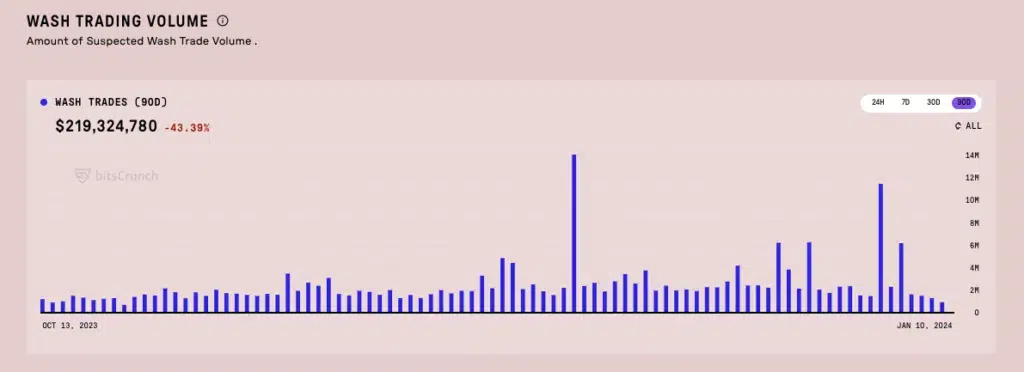
The following Celsius – Wintermute incident also shows that wash trading occurs outside NFTs and across decentralized finance as well:
Now declared bankrupt, Celsius is facing allegations of participating in wash trading. These allegations come amidst filings with the U.S District Court, which Celsius creditors amended to claim that crypto market marker Wintermute assisted Celsius with wash trading.
Example of NFT Wash Trading
Cryptopunk 9998
On 28 October 2021, two wallets traded an NFT, CryptoPunk 9998, for approximately $124,457, approximately $532 million.
The pixelated character with white hair and green eyes appeared on the CryptoPunk Bot, automatically tracking down CryptoPunk transactions and announcing them on X.
Analytics data on the Ethereum blockchain revealed that someone took a flash loan on multiple platforms and used the funds to pay for CryptoPunk 9998. The flash loan, around 124,457 ETH, was sent to the seller’s wallet, which then returned the funds to the buyer to repay the loan. Hence, indicating several signs of suspicious onchain activity.
At the end of the transaction trail, the owner of the NFT listed it back on the market for 250,000 ETH, approximately $1B. Before inflating the price through the alleged wash trade, CryptoPunk 9998 was going for $300,000 – $400,000.
In a public statement announcement on X, CryptoPunks tweeted about the transaction, claiming it was someone who bought a punk for themself using borrowed funds and repaid the funds within that chain of transactions.
Let’s consider copyright infringement as a threat to NFT safety.
Dealing with Copyright Infringement
According to U.S. copyright laws, motion pictures, literary works, performing arts, digital content, visual arts, and photography are the 6 categories of works that creators register for copyright.
This means a painting, a song, or a book are some of the creative works that can be ‘copyright infringed,’ extending to architecture, website designs, and clothing. However, there is a vague clarity and often paradoxical truth between ownership and copyright in digital NFT art.
Take the example of Quentin Tarantino and Miramax, whose litigation was a dispute over intellectual property ownership of screenplay scenes that Quentin Tarantino sold as Non-Fungible Tokens.
The film production company and the well-known director are in dispute over intellectual property ownership of screenplay scenes that Tarantino sold as NFTs. The outcome of the case and future laws will directly impact how NFTs are purchased and sold in the future. This essay predicts that courts will apply traditional intellectual property laws to NFTs, attaching copyrights to the underlying assets behind NFTs rather than to NFTs themselves.
The hybrid nature of NFTs, combining both art and technology, raises a hot debate about who owns the copyright for an NFT. Traditionally, the original artist who created the underlying work owns the copyright. However, contemporary NFT advocates have argued that even if based on an art form, an NFT always belongs to the person who minted it. This is because the NFT existed after the minter deployed a blockchain code, paid gas fees, and minted it on the blockchain.
In the Tarantino – Miramax litigation, Tarantino reproduced digital versions of the ‘PULP FICTION screenplay, a work he sold to Miramax in 1977. If the court ruling favors Miramax, the law will demonstrate that the copyright of an NFT belongs to the underlying work and not when the work is minted. As such, this will set precedence for an era where NFT creators ought to conduct thorough due diligence before participating in Non-fungible tokens. Investors risk unintentionally committing copyright infringement if they do not conduct thorough DD.
Data analytics will play a big role in conducting impeccable DD, says bitsCrunch.
Conversely, the court ruling could favor Tarantino and say that the NFTs fall within Tarantino’s reserved rights in the same intellectual property rights contract, which gave him the right to reprint and screenplay publish Pulp Fiction material. If this happens, Miramax should contend that the NFTs do not fall under a one-time transaction, which, according to the contract, does not fall under Tarantino’s reserved rights. Both of us know that the purchase and sale of NFTs constitute a one-time transaction, and the court is likely to decide that Tarantino committed copyright infringement, mainly because he reproduced the work and sold it as an asset.
The vague nature of copyright laws around creative work and NFTs has created an influx of fraudulent reproduction of creative work in the NFT space. Lawmakers have, therefore, sought to explicitly define what constitutes copyright infringement and why participants must do DD before participating in NFT auctions.
Understanding some of these crimes is among the top strategies for success in the NFT market. This is why we will dive into a famous example of NFT copyright infringement.
Example of NFT Copyright Infringement
Hermès
In February 2023, a New York jury ruled in favor of Hermes in the Hermes against artist Mason Rothschild, where the artist created unauthorized versions of the iconic Birkin bags brand, Hermes, which he sold for $1M+. According to the court proceedings of the case, Rothschild created NFTs out of dozens of Hermes bag designs, images, and prototypes to create an NFT collection, ultimately collecting several hundreds of thousands of dollars from each piece.
In countermeasure, Rothschild contested that his digital portrayal of the Hermes bag, which often cost thousands of dollars per piece, was an absurdist’s commentary on the excesses of today’s fashion world. However, Hermes alleged that the artist who portrayed the bags as 100 beautiful purses in rainbow-colored fur was a “digital speculator who wants to get rich quickly appropriating.’
Furthermore, Hermes saw the “Metabirkins Collection” collection as a brand rip-off of the Hermes trademark Birkin and added the meta prefix. However, Rothschild continued to contest that his collection was no copyright infringement but works of art depicting imaginary bags covered in fur. Meanwhile, the court found Rothschild guilty of trademark infringement and cybersquatting, thereby awarding Hermes $133K for incurred damages.
Cybersquatting is a form of copyright infringement involving using a brand’s registered trademark in bad faith. Below, we discuss the existence of cybersquatting in the NFT industry.
Identifying NFT Cybersquatting
In the previously discussed cases (Hermes Vs. Rothschild and Tarantino Vs. Miramax), one might wonder whether OpenSea was guilty of benefiting from the proceeds of illegally created pieces of work.
To understand this, one must dive into cybersquatting and how it started. The dot-com era gave birth to cybersquatting, which ultimately increased at the height of the social media boom and intensified at the peak of NFTs.
Cybersquatting in the early days of the internet involved criminals harming the proprietary interests of trademark owners by registering domains similar to owned trademarks. The domain names are sold on a first-come and first-serve basis, diverting potentially high profits from the actual trademark owner in case they get under the control of a cybersquatter. Often, the cybersquatter diverts the interests of an internet user from their intent by, for example, redirecting them to competitors or “scammers.” This not only costs the trademark owners profits but could also cost the internet user both money and time.
The act aimed to protect trademark owners from internet infringement by awarding a cause of action if one was the victim of cybersquatting.
On 5th June 2009, the manager of St. Louis Cardinals, Tony La Russa, filed a complaint against X (then Twitter), accusing the social media platform of cybersquatting. The case centered around a profile that used La Russa’s brand name, La Russa’s pictures, and a headline tagging “Hey there! Tony La Russa is now using Twitter.”
The profile encouraged users to join Twitter, and they would start getting regular updates from La Russa. It turned out that the updates were vulgar and derogatory comments that aimed to divert internet traffic from La Russa’s website and potentially harm his brand name in bad faith.
An update in the same year established that the La Russa – Twitter Inc. case had been settled. Twitter stated in a blog post that it did not intend to pay, claiming the case had only been an unnecessary waste of judicial resources. However, the company stepped up to fight the cybersquatting issue by rolling out the beta version of verified accounts.
DroomDroom prepared a quick guide on the top 4 cryptocurrency scams you could face at any moment.
According to Twitter Inc., the beta version targeted public agencies, famous artists, organizations, public figures, celebrities, and well-known athletes at risk of social media impersonation. While this does not relate to cybersquatting NFTs, it immediately ties social media and marketplace impersonation as precedents of cybersquatting NFTs.
La Russa Against Twitter Inc. plays down the importance of internet platforms conducting due diligence on the profiles registered on their platforms. As such, it leaves the responsibility of conducting due diligence fully in the hands of users and what they consume.
Thanks to bitsCrunch, combining big data, AI, and ML has changed the game by introducing a low-cost forensics product targeting both users and platforms like X and NFT marketplaces like OpenSea at a time when anyone can impersonate a public figure and get verified on social media for $8 a month at a first-come,first-serve basis. Ultimately, the verified profile is used to ‘cybersquat’ on NFT marketplaces.
However, the Hermes case is quite the contrary as to the extent that artists can reference real-world items while executing digital art on the blockchain, and yet a question of authenticity as to what compliments copyright infringement if not the marketplaces that purportedly support the minting of stolen items.
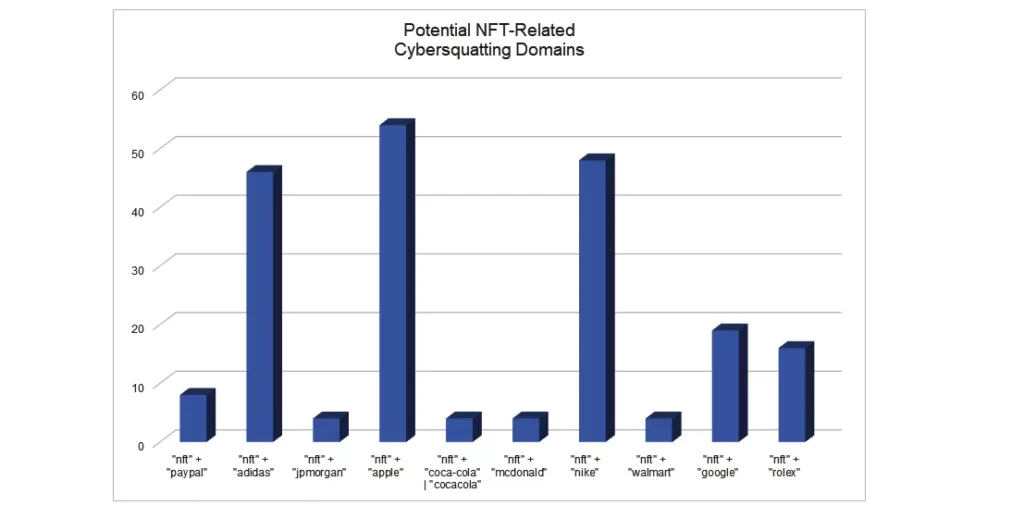
bitsCrunch wants users to take the most meaningful data bits to make informed decisions too. For instance, there poses a significant risk if one is not able to set apart what collection aims to collect frivolous gains by depicting the real world, what collections are truly inspired by traditional art and depict extra effort on the part of the minter and what collections are inwardly utter scams and cybersquatters.
bitsCrunch intends that end users and investors will have the final say when they conduct due diligence using such meaningful data. It is for the bitsCrunch intelligence dashboard to fairly pinpoint the full picture of NFT forensics when identifying instances of bad play.
The following bitsCrunch features make the platform a safe bet for ensuring profitability of NFT Investments:
- High-quality NFT analytics
- Detailed forensic data
- Seamless API Integration
- Community-driven ecosystem
- Cross-platform compatibility
- Trustless and scalable
One reason bitsCrunch stood out when looking for the perfect tool for conducting data-driven due diligence was the platform’s low-cost solution, enabling anyone to query NFT data at a relatively low price, in addition to an AI-enhanced decentralized network that can scrap multiple blockchains for reliable NFT data analytics.
Led by a great team and in the hands of prominent data analyst Vijay Pravin, the CEO, and backed by Animoca Brands, Coinbase Ventures, Polygon, Chainlink, Morningstar Ventures, Gate.IO, Synaps, Borderless Capital, Coinswitch, Genblock Capital, and dozens of prominent partners. bitsCrunch believes it has all its takes to help brands, artists, marketplaces, investors and collectors safeguard NFTs.
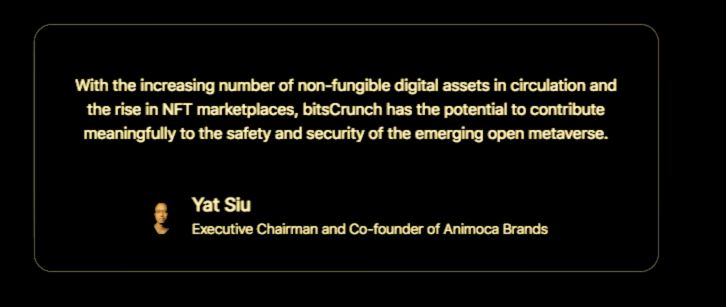
Analytics as one of the Top Strategies for Safety and Profitability in NFT Investment
Not just analytics but intelligent analytics. This section discusses how bitsCrunch Intelligent Analytics Dashboard safeguards NFTs against theft, copyright infringement, cybersquatting, and wash trading.
Enriched NFT Analytics
NFT creators and consumers must rely on continuously enriched data that mirrors the latest industry developments. This enables analytics platforms like bitsCrunch to derive meaningful customer data consistently. This allows customers to rely on accurate insights, have a competitive advantage, foster collaboration through community contributions, and focus on core competencies rather than having to generate and clean the data.
Feeding Enriched Analytics to NFT Lending Protocols
NFT lending protocols must navigate the dynamic field of non-fungible tokens when accurately deriving loan collateralization ratios. The rocketing growth of the NFT space has complicated this process even more, thereby blurring how protocols maintain updated yet comprehensive details of an NFT’s value, growth, and potential risks.
Comprehensive NFT and DeFi Market Analytics
Consumers will continue to rely on real-time metrics for trading volumes, trends, and other relevant sentiment analytics. If they don’t, they risk being unable to make accurate decisions that facilitate informed investment analysis.
bitsCrunch presents a genius solution that empowers NFT investors with an analytical edge when forecasting NFT market trends, identifying malicious intent such as wash trading and cybersquatting, and serving as a valuable tool for platforms to vet ownership history, market value, and authenticity.
Proactive Fraud Detection and Alerting System
Suppose you wonder how to stay safe against fraud in the increasingly popular NFT market. In that case, bitsCrunch has an affordable subscription that protects users from fake NFT mints, phishing attacks, cybersquatting, and misleading metadata.
The law protects Hermes from cybersquatting but does less to protect investors who purchase such digital pieces. Hence, BitsCrunch wants to take an extra step and ensure that investors who buy into collections like Hermes remain protected from similar incidents.
The bitsCrunch intelligent analytics network addresses this challenge by offering a relatively affordable fraud detection and alerting mechanism. Therefore, the user can set up alerts and receive notifications whenever suspiciously fraudulent activity or when the user is about to interact with a potentially harmful contract. Quick response, prompt preventive mechanism, integrity, and authenticity are some of the core features of the bitsCrunch proactive fraud detection system. As you can see, the system deserves to be among the top strategies for success in the NFT market.
Compliance with Regulations
Market participants should pay attention to compliance with regulations as one of the top strategies for success in the NFT market.
Every participant in the NFT sector faces the risk of engaging in non-compliant NFT activity. For example, buying copyright-infringed work may not pose as criminal, but distributing such material is illegal.
Therefore, this means everyone who bought any of the cybersquatter Hermes collection lacks the legal rights to distribute the NFTs. This also underscores the harm that such a collection could bring to the publishing marketplace. Hence, the reason bitsCrunch is extending an invite to both investors and NFT marketplaces that want to navigate the complex regulatory and AML environment for NFTs effectively.
Creators
Artists, creators, and celebrities also need the bitsCrunch analytics platform to consistently rely on accurate pricing information, market trends, and real-time metrics when optimizing their work and promotional strategies.
Case Study: Brands Leveraging the Power of Data Analytics to Safeguard NFTs
Skry
Skry aims to simplify searching for the best NFTs using its revolutionary NFT rating platform. Skry said it employed the bitsCrunch wash trade detection API to improve its rating system and filter out fake volumes.
Skry co-founder Mike Roth said the API improved Skry’s overall rating system. Roth stated, “When you look at the ratings, you get an understanding of the NFTs before you purchase them. It’s a way to bet on the projects you believe.“
Mike said yes to the bitsCrunch wash traded API because if they did not, the team at Skry would have had to build a wash trading algorithm from the ground up.
UnleashNFTs by bitsCrunch saved them both the time and money required to build such an API. To their advantage, bitsCrunch was competitively cheap and had a sophisticated but reliable AI-driven wash trading system.
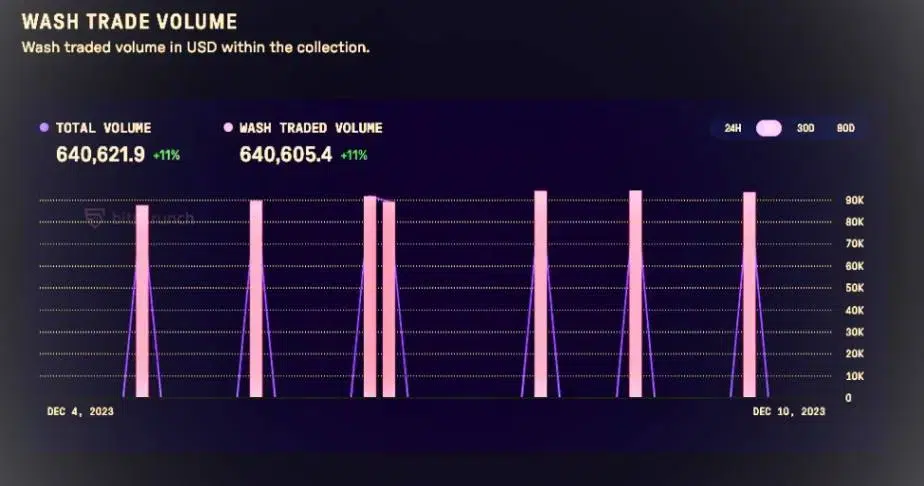
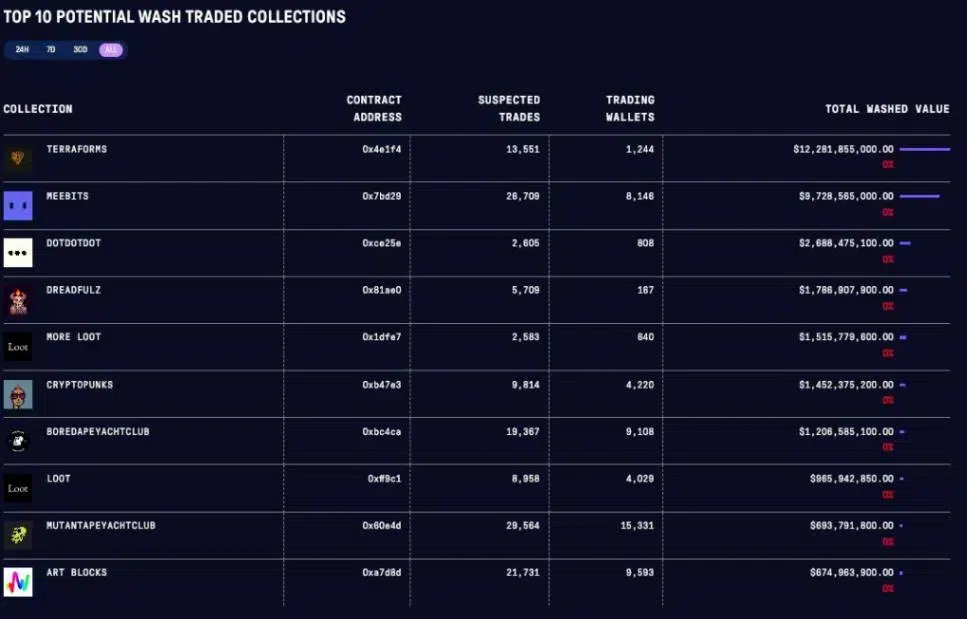
DApp Radar
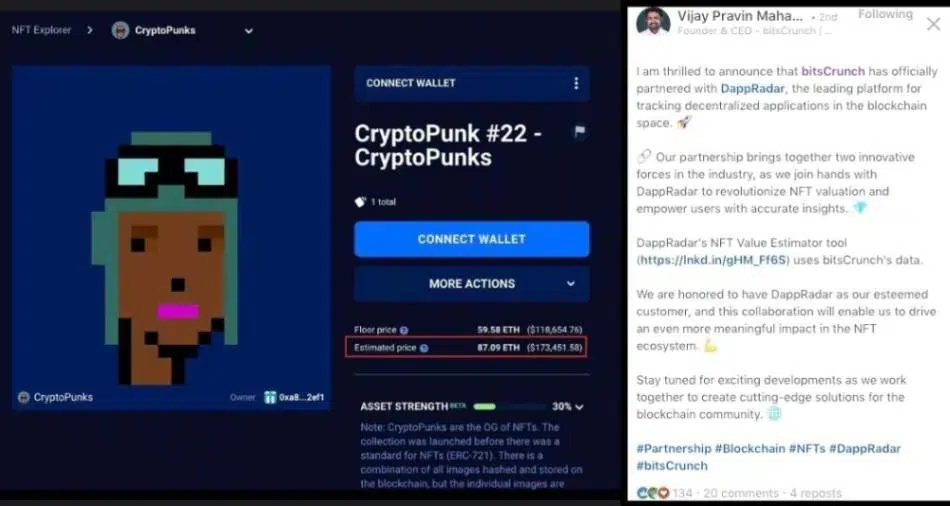
Both platforms have demonstrated the need for data democratization through the partnership. On the bitsCrunch $BCUT Review, we mentioned how bitsCrunch managed to feed 25,000 more collection data to DappRadar, ultimately boosting its SEO by 1000x. More data meant that DappRadar would expand its NFT price estimation tool coverage, thereby ultimately showing a dozen more coverage pages.
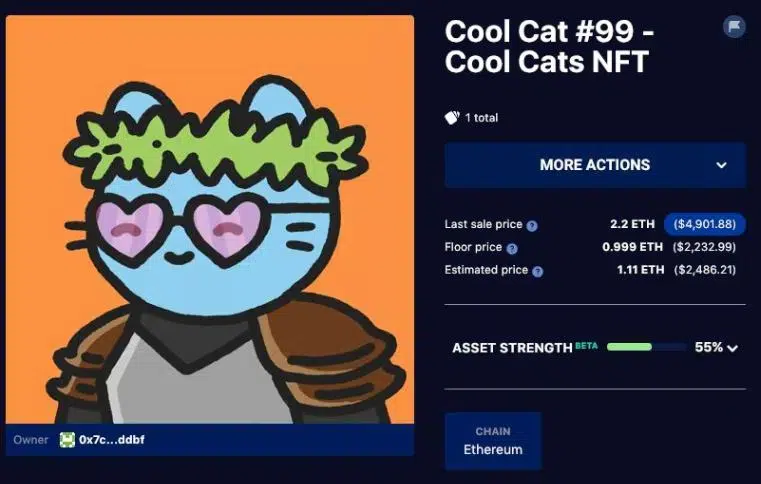
Analytics Saas Solutions for Processing NFT Data into Reliable Market Research Insights
NFT investors must rely on analytics to bolster safety in the NFT ecosystem. bitsCrunch, headquartered in Germany, democratizes meaningful data using its AI-powered analytical tools to offer robust results for advanced metrics.
The bitsCrunch Analytics platform currently provides a personalized SaaS-model-based solution for tackling issues facing the NFT industry. Let’s look at these solutions below:
UnleashNFTs
UnleashNFTs is the official information center that runs on a Business to Customer (B2C) model and offers a comprehensive analytics dashboard for the NFT space that contains a portfolio tracker, market overview, trading volumes, whale activity, wash traded volume, gaming reports, top collections and so much more.
Scour
Scour is the official bitsCrunch AI-enhanced safety feature that performs regular forensics tools against fraudulent transactions. bitsCrunch has packaged the Scour feature as a business-to-business (B2B) offering for watching against any kind of quantity and value manipulation.
Liquify
Liquify or the bitsCrunch Fair Value Estimation feature helps determine the actual fair value of an NFT. The AI-driven tool is a B2B product emphasizing token attributes such as metadata and sales history.
Crunch DaVinci
Crunch DaVinci is an AI-based model for flagging down forgery and copycats using an advanced digital asset forgery detection system. bitsCrunch has packaged this tool as a B2B and B2C product for bootlegging digital art content and protecting creators from infringement.
Conclusion of Top Strategies for Success in the NFT Market
Non-fungible tokens are cryptographic tokens that exist on the blockchain and have unique and distinct metadata from any other token hence one cannot replicate them.
We are only a few years into the technology. Still, NFTs’ growing popularity has broadened awareness, increased their value, and attracted several insecurities, including cybersquatters, hackers, airdrop scams, and identity theft. As such, the industry continues to face inherent risks that key stakeholders must address to ensure maximum safety and profitability of investments.
In the top strategies for success in the NFT market guide, we have emphasized the value of implementing reliable insights, utilizing analytics tools, and understanding onchain crimes as top strategies for success in the NFT market.
bitsCrunch is the standard analytics platform for scouring on-chain data for any suspicious activity. For anyone who wants to secure their cryptocurrencies, blockchains, or Non-Fungible Token investments, bitsCrunch offers personalized forensics solutions using its analytics platform for onchain forensics.
